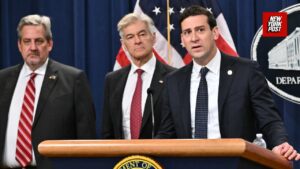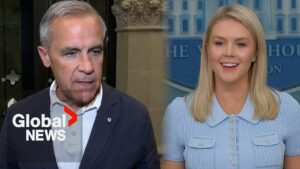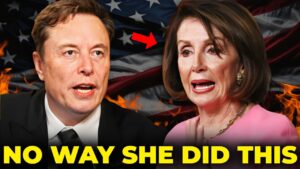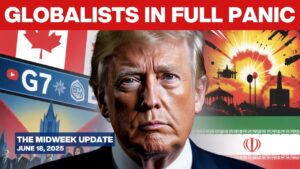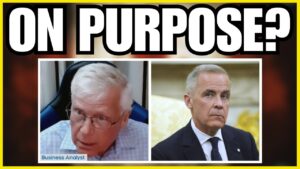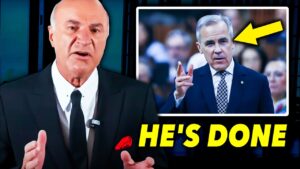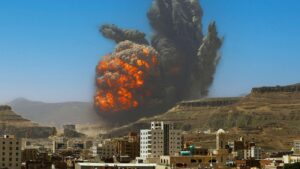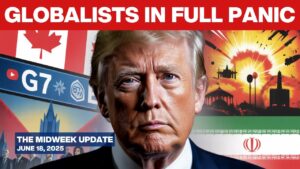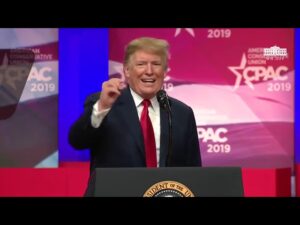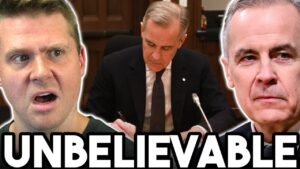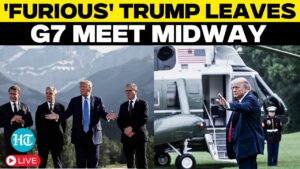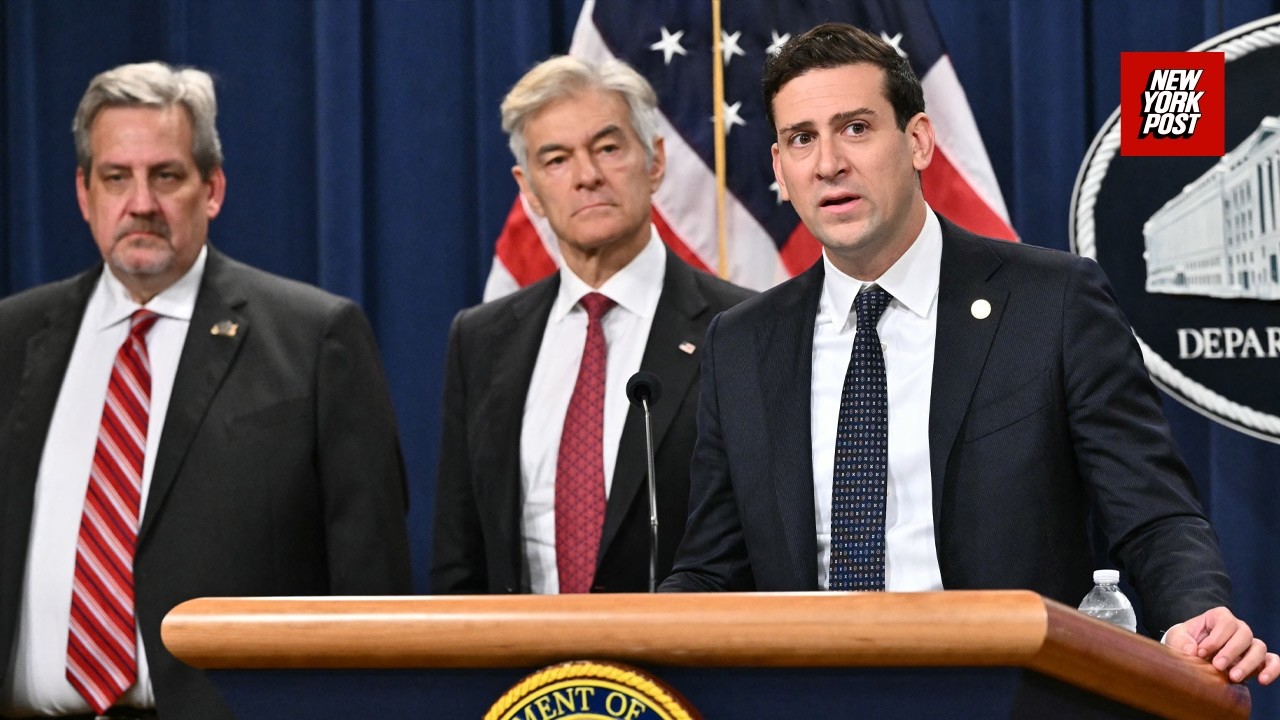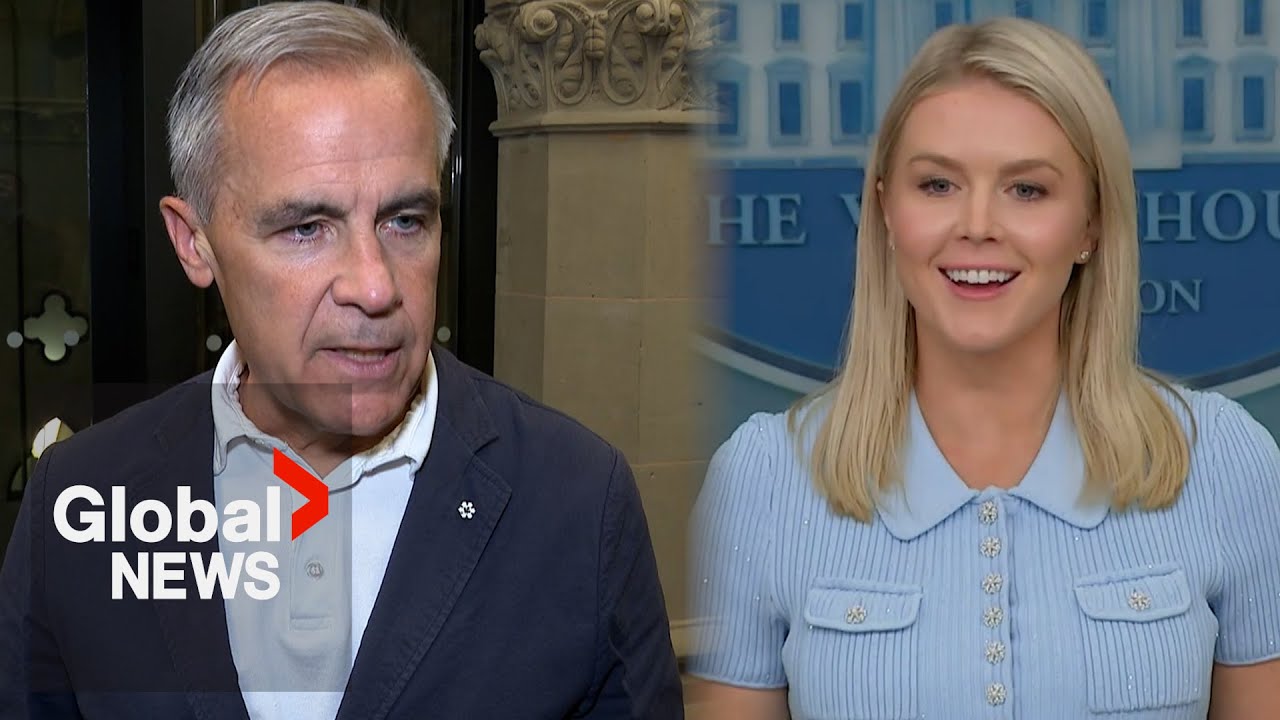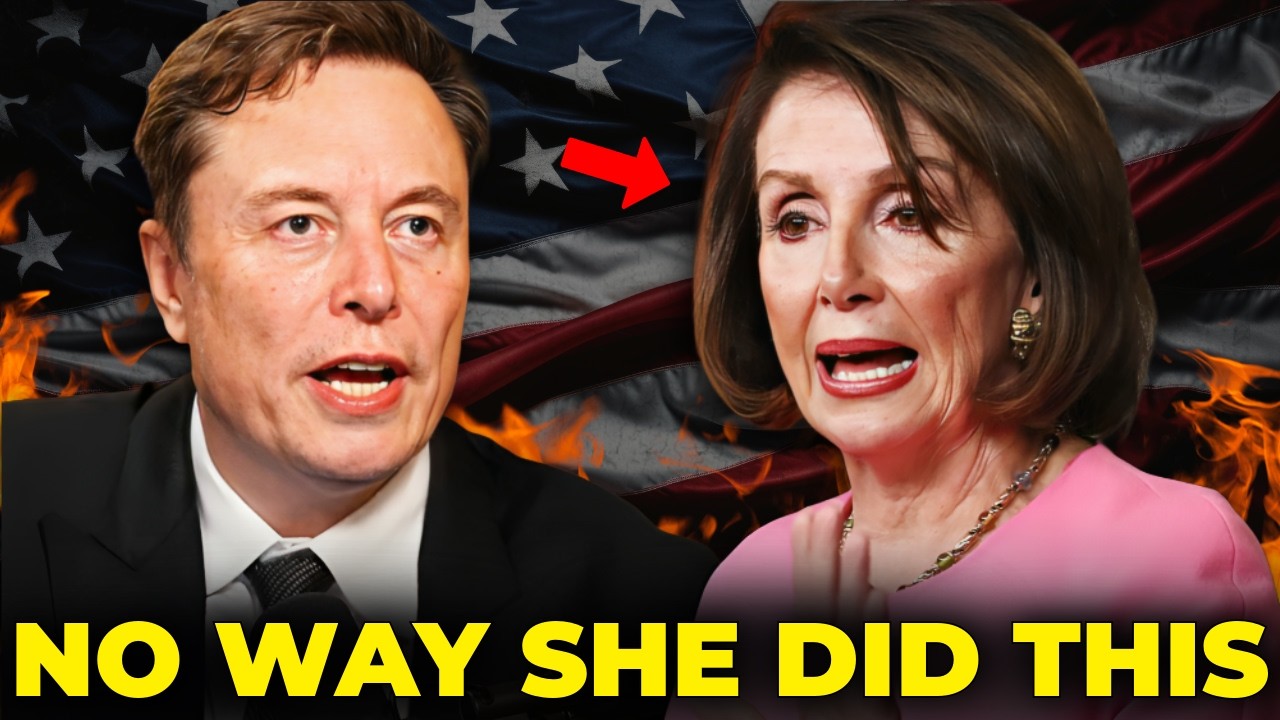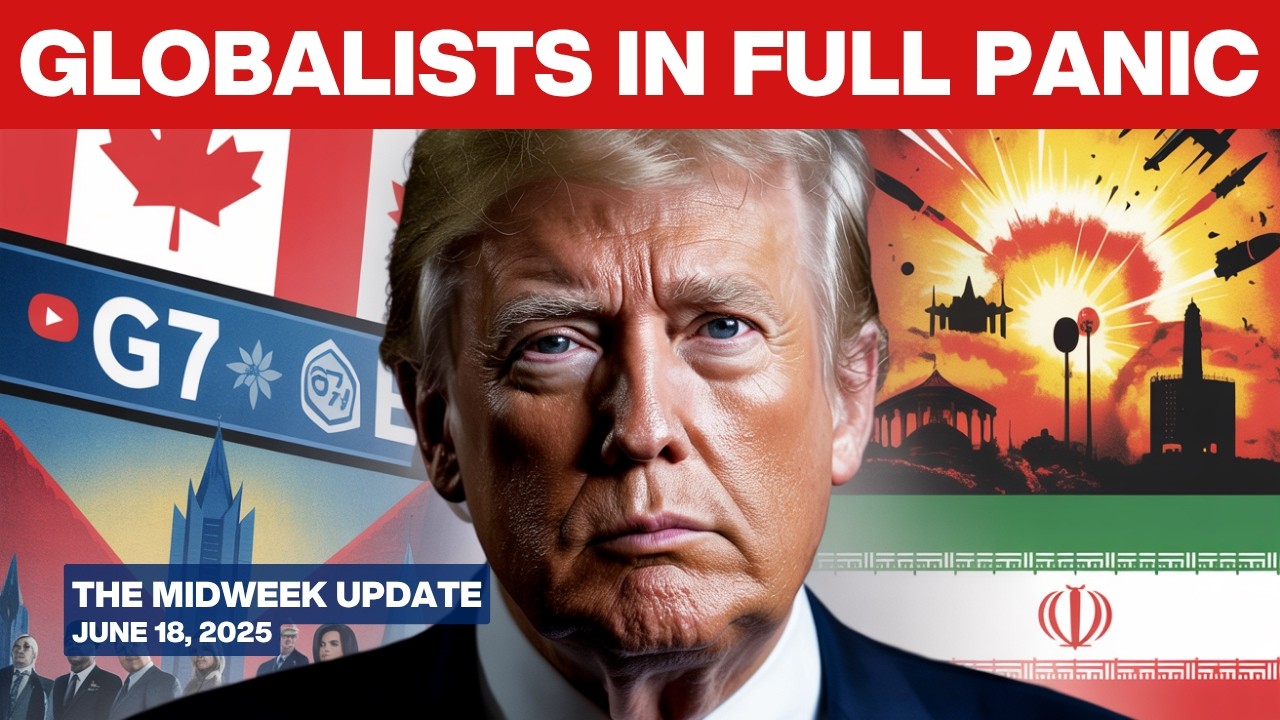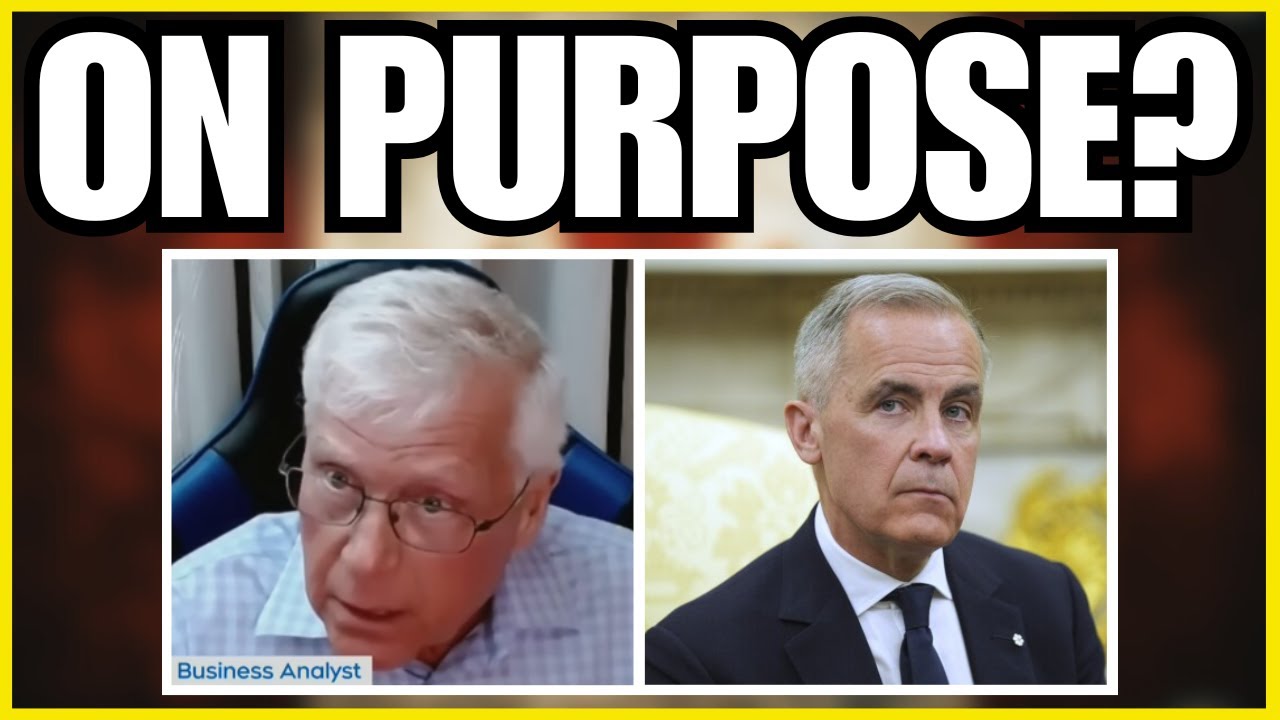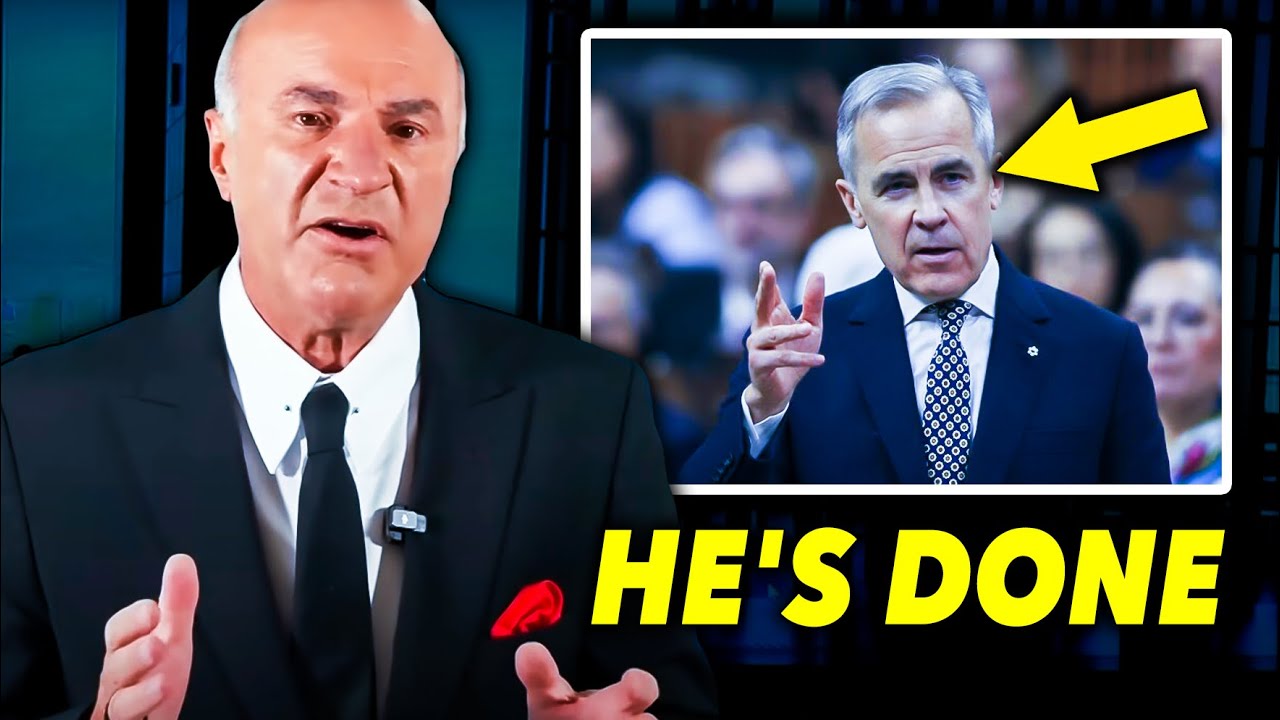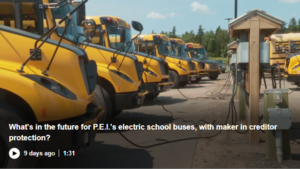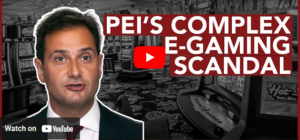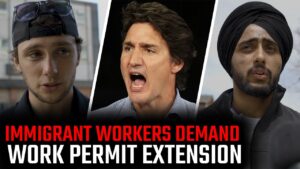The Panama Canal has long been a key trade route, connecting the Atlantic and Pacific Oceans and moving trillions in cargo. But recently, it’s been facing some serious challenges. Elon Musk has even expressed concern over what’s going on with it. Once controlled by the U.S., it was handed over to Panama in 1999. Since then, rising fees and tensions, including a Trump threat, have made shipping companies unhappy. So, what’s really happening here? Let’s dive into it.
Video Transcript:
(00:03) The Panama Canal has long been a key trade route, connecting the Atlantic and Pacific Oceans and moving trillions in cargo. But recently, it’s been facing some serious challenges. Elon Musk has even expressed concern over what’s going on with it. Once controlled by the U.S., it was handed over to Panama in 1999.
(00:31) Since then, rising fees and tensions, including a Trump threat, have made shipping companies unhappy. So, what’s really happening here? Let’s dive into it. Donald Trump’s Desperate Threat On December 22nd, Donald Trump gave a sneak peek of what’s in store when he steps into the White House, and honestly, it left a lot of people talking.
(00:50) At a rally in Arizona, he didn’t hold back on the Panama Canal, calling out Panama for what he sees as crazy-high fees charged to American ships passing through. To say his comments shocked some people would be an understatement. Trump’s big issue? He argued that these skyrocketing fees are making it harder for American businesses to ship goods between the Atlantic and Pacific Oceans, hurting the economy in the process. In his view, this could be a big reason why the U.S.
(01:15) economy hasn’t been doing as well in recent years. His solution? If Panama doesn’t lower the costs soon, the U.S. might just take the canal back. Yep, you heard that right – Trump suggested that if the situation doesn’t change, the United States could demand control of the Panama Canal again. He even warned Panama officials to be “guided accordingly.
(01:36) ” Why’s this such a big deal? For starters, the Panama Canal is crucial for international trade. It’s one of the busiest shipping routes in the world, so if the fees keep climbing, it could have massive effects on global commerce. Trump also pointed out that countries like China might be benefiting from these high costs, while the U.S. is getting stuck with the bill.
(02:00) The canal’s strategic location gives China a chance to move goods efficiently, which could put American businesses at a disadvantage. The president of Panama, Jose Raul Mulino, didn’t waste any time responding. He made it clear that Panama has full control over the canal, and he wasn’t going to let Trump—or anyone else—tell him otherwise. He also stressed that the canal was never going to be handed back to the U.S.
(02:23) , and frankly, he wasn’t interested in negotiating with Trump about it either. As you can imagine, this sparked quite the back-and-forth. But Elon Musk, the tech mogul and now a key figure overseeing U.S. government spending, weighed in with his take on why the prices are so high.
(02:42) Sources close to him say that Elon believes Panama’s price hikes are a result of several ongoing issues they’ve been facing. Things like a lack of fresh water, political tensions, security concerns, and other challenges have all piled up over time, and it’s been costly for Panama to keep things running smoothly. Elon suggested that Panama might be overcharging American shipping companies in an effort to make up for these financial issues.
(03:08) In other words, it’s less about some global conspiracy and more about Panama’s own financial struggles. But while Elon’s take makes sense from a business perspective, it didn’t exactly calm the situation down. Many people, especially Trump’s supporters, just saw his comments as another example of him being, well, Trump. But for others, this was more than just a few harsh words—it felt like a direct threat to another country’s sovereignty.
(03:31) And it wasn’t just Americans who were upset. The response from Panama was pretty fierce. President Mulino didn’t hold back, expressing serious distaste for Trump’s remarks. This reaction took many by surprise, hinting at a deeper issue at play here. It turns out, there’s a long, complicated history between Panama and the U.S.
(03:51) that goes way beyond just the past few decades. It stretches back over 500 years, starting with the discovery of the narrow strip of land that would later become the Panama Canal. To really understand the weight of what’s happening now, you have to go all the way back to 1513.
(04:13) That’s the year when Vasco Núñez de Balboa, a Spanish explorer, first crossed the isthmus of Panama and realized that the land was connecting the Atlantic and Pacific Oceans. An Explorer’s Dream Back in October of 1513, Spanish explorer Vasco Núñez de Balboa made an incredible discovery while crossing the Isthmus of Panama. He found a narrow strip of land that separated the Atlantic and Pacific Oceans, and immediately saw the potential for creating a passage between the two.
(04:43) He told other explorers about his find, imagining that with the right resources, he could build a waterway connecting both oceans. This idea sparked excitement among other explorers, since it could save a ton of time for ships traveling between Europe and Asia. Why? Well, back then, the southern tip of South America was a nightmare to navigate. The seas were rough, and any ships that attempted the journey rarely made it back.
(05:02) Those that did return shared horror stories about violent storms, treacherous waters, and encounters with what they believed were sea monsters. Yeah, it was a pretty brutal journey. So, it made perfect sense to explore the idea of a shortcut. Many explorers jumped on board with the concept, but even though the idea was enticing, real progress didn’t happen right away.
(05:24) The main issue? The technology just wasn’t there. The tools needed to create a canal weren’t advanced enough to tackle the job. And on top of that, the land they had to dig through was incredibly tough. Thick jungles, towering mountains, and a brutal tropical climate made things even harder. Most of the explorers who tried to work there weren’t used to living in such harsh conditions, and it quickly became clear that building the canal wouldn’t be as easy as it seemed.
(05:51) For centuries, the dream of a canal lay dormant. It wasn’t until the late 19th century—over 300 years after Vasco’s death—that anyone truly tried to make it happen. In 1881, a group of French explorers decided to take on the challenge. By this time, technology had advanced enough to make the task seem possible.
(06:16) The French had recently completed the Suez Canal in Egypt, a huge engineering success, and now they set their sights on Panama, thinking they could build a similar sea-level canal there. They had the right equipment and know-how, but they still had to contend with the same rough terrain that had stymied earlier explorers. The Panama Canal project was taken over by a French engineer named Ferdinand de Lesseps, who had just pulled off a massive win with the Suez Canal in Egypt.
(06:41) Given his success there, everyone assumed that building a canal in Panama would be a breeze. But as it turned out, they couldn’t have been more wrong. Right from the start, things went south. Almost immediately, workers started falling ill with malaria and yellow fever. The tropical environment was brutal, and the diseases spread quickly.
(07:03) Within just a few weeks, workers were dying in large numbers, and it became clear that Ferdinand and his team hadn’t thought through what they were getting into. The first major hurdle? The climate. Panama’s tropical weather meant heavy rain, landslides, and an abundance of mosquitoes. These mosquitoes were the real troublemakers, as they carried the deadly diseases that wiped out so many workers.
(07:23) Unlike the dry, manageable desert conditions of Egypt, Panama’s dense jungle was tough to navigate. The landscape was full of uneven slopes and thick vegetation, making it way more difficult to dig through than the flat desert terrain they’d dealt with in Egypt. Then, there were the costs.
(07:43) All these issues—disease, the rough terrain, the equipment needed to deal with it—made everything much more expensive than anticipated. The project became a financial black hole. Expenses kept rising, but progress was slow. And to make matters worse, there was a lot of corruption among the higher-ups, which only added to the growing mess. By 1889, barely eight years into the project, things had completely fallen apart.
(08:07) Ferdinand had lost over 20,000 workers to disease, and the money spent was gone for good. The whole thing was a disaster, and with no real progress being made, most of the teams working on the canal pulled out. By the end of December 1889, the project was officially abandoned. It was a huge failure by every measure. But less than 20 years later, the U.S.
(08:29) stepped in to try again. This time, it was led by John Stevens, a well-known civil engineer who had a reputation for getting things done. The question was: would Stevens succeed where so many others had failed, or would he just be another name in the long list of those who tried and fell short? Building the Canal At the dawn of the 20th century, U.S.
(08:53) President Theodore Roosevelt got seriously interested in completing the Panama Canal. He saw huge potential in having a shortcut between the Atlantic and Pacific Oceans—not just for trade, but for military strategy as well. The canal could give the U.S. a faster route for transporting goods and troops, making it a powerful asset for both commercial and military purposes.
(09:12) There was just one big problem: it wasn’t the U.S. ‘s territory. While building the canal was one thing, actually having control over it was another. For Roosevelt’s vision to work, the U.S. needed legal rights over the canal zone, something the previous countries trying to build it hadn’t been able to secure.
(09:30) The idea of the U.S. owning it—or at least having some special rights—was key to making it truly beneficial. Around the same time, Panama was in the middle of a battle for independence from Colombia. The U.S. saw this as an opportunity to get involved. Panama’s fight for independence wasn’t going well, and Roosevelt figured supporting them could be a win-win. So
(09:53) in 1903, the U.S. backed Panama’s independence movement, offering political and financial support. Thanks to this backing, Panama agreed to sign a treaty that would grant the U.S. control over the Canal Zone, effectively giving them the green light to build and manage the canal in exchange for some financial aid. The treaty was signed in 1903, and just a year later, in 1904, construction began.
(10:17) But this time, it wasn’t the French who were in charge—it was the United States, and they brought in John Stevens, an American civil engineer with a solid reputation for getting things done. Stevens was known for being a smart, no-nonsense manager, and he had a knack for handling huge projects under a lot of pressure.
(10:35) He was exactly the kind of person needed to push the project forward after decades of failure. John Stevens, the new man in charge of the Panama Canal project, learned from the mistakes of the past, especially the ones made by Ferdinand de Lesseps and his French team. Instead of diving straight into the physical labor of digging, Stevens took a smarter approach.
(10:58) He focused on taking care of his workers first, understanding that keeping them healthy was essential to making the project succeed. He ensured they had decent housing, good sanitation, and most importantly, access to medical care. Malaria and yellow fever had decimated the French workforce, so Stevens wasn’t taking any chances.
(11:20) He brought in top medical professionals from the U.S. military to manage the health risks and keep the diseases under control. But Stevens wasn’t just focused on the workers’ wellbeing. He also realized that digging a sea-level canal, like the French had tried to do, would be a monumental task in such difficult terrain.
(11:43) The land was full of steep slopes and deep valleys, and leveling it all out would be incredibly expensive and time-consuming. So, Stevens and his team of engineers made a big decision: instead of going for a sea-level canal, they would build a lock-based system. The idea was to lift ships up to a higher elevation at one point of the canal, then lower them back down at another, bypassing the need to dig through steep hills.
(12:07) This lock system would make it easier to work with the land’s natural features, reduce costs, and streamline the process. It wasn’t going to be easy, but it was definitely a more practical solution than what had been attempted before. By 1906, they had made solid progress, but there was still a mountain of work left to do. However, their troubles were just beginning.
(12:28) Tensions between Stevens and the U.S. government began to escalate, especially with President Theodore Roosevelt. At first, the administration had been fully supportive, providing the resources and backing the project needed to get started. But by the end of the year, it seemed like the government’s support was turning into interference.
(12:49) Some reports suggest that Roosevelt was pressuring Stevens to hire a contractor he didn’t trust, while others claim the president wasn’t on board with some of Stevens’ recent decisions about how the project should be run. Whatever the reasons, it was clear that the relationship between Stevens and the government was beginning to sour.
(13:08) Then came the breaking point. Stevens, already dealing with the immense pressure of the project and the constant strain of working in such harsh conditions, fell ill from stress. It was the perfect excuse for the U.S. government to replace him. But before they could formally push him out, Stevens beat them to the punch.
(13:31) In 1907, he publicly resigned, stepping down as chief engineer and handing over the reins to a man named George Washington Goethals. Progress Under Goethals When George Washington Goethals took over the Panama Canal project, many expected him to bring some fresh ideas and lead the charge in a totally new direction. But in reality, he mostly just picked up where John Stevens left off.
(13:55) Goethals and his team used the same methods Stevens had put in place, including steam shovels and dynamite, to excavate the infamous Culebra Cut, one of the toughest sections of the canal. It wasn’t an easy task by any means. The land was treacherous, and new excavation methods were necessary to make any real progress.
(14:16) But even with all the latest technology, they still faced constant setbacks with equipment failures and the sheer difficulty of moving that much earth. Despite all the measures Stevens and Goethals took to prevent disease—such as bringing in top-notch medical teams to fight yellow fever—things weren’t looking great on the health front. Nearly 5,000 workers died from yellow fever and malaria during the project.
(14:38) The work was grueling, and conditions were far from ideal. On top of the disease, landslides and bad weather constantly set them back. Workers would spend weeks carving out a section of the canal, only for a minor rainfall to fill it up with mud, undoing all their progress. It was demoralizing, but Goethals and his crew didn’t back down.
(15:00) They kept pushing forward, determined to make that 500-year-old dream of a canal connecting the Atlantic and Pacific a reality. Finally, after a decade of struggles, setbacks, and unimaginable challenges, the Panama Canal was completed. On August 15, 1914, the SS Ancon, a U.S. cargo ship, became the first vessel to officially pass through the canal.
(15:27) This moment was a huge deal—not just for the U.S. but also for Panama. The canal was going to change everything. Before the canal, moving between the Atlantic and Pacific took about two months—an absolute nightmare for trade and military operations. But with the canal now in place, it only took about eight hours to travel between the two oceans.
(15:51) That was a massive difference, and it gave the U.S. a huge advantage in both commerce and military strategy. What made this even more impressive was the diversity of the workforce. Workers came from all over the world, including experienced laborers from the Caribbean, all of them coming together to make the canal happen. It wasn’t just an American achievement—it was a global effort.
(16:14) From the moment the Panama Canal opened, it was under U.S. control. The U.S. didn’t just have authority over the canal itself; they owned the entire area surrounding it, which gave them a major strategic advantage. President Theodore Roosevelt had seen the canal as a vital piece of military infrastructure, especially as global tensions started to rise and World War I loomed on the horizon. The U.S.
(16:42) military was quick to recognize the canal’s importance, and they used it as a vital shipping route to transport supplies for the war effort. Even after the war ended, the U.S. held onto control of the canal zone. The canal was vital not just for military purposes but for trade as well. Over the years, the U.S. continued to invest in its infrastructure, making improvements to accommodate even larger ships, including the massive Seawise Giant, which never actually passed through.
(17:10) Despite that, countries from all over the world were keen to use the canal, as it made shipping between the Atlantic and Pacific much faster and more efficient. Because of the canal’s strategic location and high traffic, Panama benefited significantly from the U.S. presence.
(17:29) They were receiving generous compensation from the United States for allowing them to control the area. For decades, the U.S. held sovereignty over the canal and its surrounding region. But things were about to change. In the nineteen sixties and nineteen seventies, Panama began to push back against U.S. control, and everything changed when Omar Torrijos became the president.
(17:50) Omar wasn’t your typical politician. He loved his country deeply, and he was ready to fight for Panama’s sovereignty, no matter what it took. He believed Panama should have full control over its land, and that meant ending the Hay Bunau Varilla Treaty, which had granted the U.S. ownership of the canal zone in exchange for financial compensation.
(18:10) Omar Torrijos wasn’t about to let Panama remain under the shadow of U.S. control forever. He and his people were determined to gain complete sovereignty over every inch of their land—including the Panama Canal, a massive symbol of American influence. Torrijos knew that the canal was vital to Panama’s future, both economically and politically, and he wasn’t going to settle for anything less than full control.
(18:37) Starting in the late sixties and into the early seventies, Omar Torrijos began some pretty intense negotiations with the U.S. President Richard Nixon. To say the talks were tense would be an understatement. Both sides had strong feelings about the canal and its strategic importance, but after years of back-and-forth, they finally reached an agreement in 1977.
(19:01) This was when the Tjô Carter Treaties were signed, which granted Panama more legal rights over the canal. The U.S. still had a significant presence and influence, but it was a step in the right direction for Panama. Over the next two decades, Panama’s control over the canal continued to grow. They gained more and more rights, with the ultimate goal of full ownership.
(19:22) Every year, Panama’s position became stronger, and the U.S. presence slowly diminished. Finally, on December 31, 1999, Panama officially gained full control and ownership of the canal, marking the end of an era. The canal was now Panama’s to manage, and it was a massive win for the country. But even though the handover was a huge milestone, tensions were far from over.
(19:46) Overcharging the US Once Panama gained full control of the canal in 1999, they didn’t waste any time making some major changes. The first thing they did was raise the fees that shipping companies had to pay to use the canal. And this wasn’t just a small bump—it was a big one.
(20:06) The tolls almost doubled, which definitely made waves in the shipping industry, especially among American companies like Maersk Line and Cosco Shipping. These companies weren’t just any players; they were huge contributors to the U.S. economy, moving tons of cargo between oceans. The Panamanian government argued that the hike was necessary to fund maintenance and improvements to the canal.
(20:31) They pointed out that the infrastructure needed to be upgraded to handle bigger ships in the future, which would, in turn, benefit everyone. But of course, the shipping companies weren’t thrilled about this. They grumbled about the higher fees, but at the end of the day, they had no choice but to pay up. Over time, the shipping companies got used to the higher fees—though they definitely didn’t like it. But the story didn’t end there.
(20:55) As the years went on, the tolls kept rising. By the mid-two thousand and tens, the situation was getting out of hand. The shipping companies were not happy, and some even started holding private meetings with the Panama Canal Authority to figure out ways to make the tolls more affordable. It was clear that something needed to change, but the Panamanian government wasn’t backing down.
(21:17) Then came 2016, when the Panama Canal Authority hit everyone with another massive price increase. This time, it was too much for many companies to swallow, and the backlash was even louder. U.S. shipping companies were especially vocal, criticizing the increases and calling for some kind of solution.
(21:40) The tolls were climbing faster than anyone had expected, and with no signs of slowing down, it felt like the canal’s growing costs were becoming a serious issue for American businesses. So, when the Panama Canal Authority was asked why they kept raising the tolls, their answer was pretty straightforward: they needed the extra cash to fund the ongoing expansion project.
(22:01) They’d promised that the canal would be upgraded, and by the end of 2016, the project was finally completed. The canal was bigger, better, and ready to handle even more traffic, especially with the new set of locks designed for larger ships. But, as expected, the tolls didn’t go back to what they were before the project started. In fact, the price hikes just kept on coming.
(22:25) By early 2020, the toll increases weren’t slowing down. In 2023, for instance, any ship under 65 feet had to pay over 10 percent more just to pass through. And it didn’t stop there—by 2025, the fees were expected to jump by almost 30 percent. Shipping companies had no choice but to accept the new rates, though they weren’t happy about it.
(22:52) A lot of people started to realize that under U.S. control, tolls had mostly stayed the same for nearly four decades. It wasn’t until Panama took full control that prices started to climb, particularly after the seventies. This shift in pricing didn’t sit well with many, and it eventually led to some pretty heated discussions, one of the biggest moments being when Donald Trump decided to speak out about it.
(23:16) Trump vs Panama When Donald Trump spoke out about Panama, he didn’t hold back. He accused the Panamanian government of overcharging shipping companies using the canal and went as far as threatening to take control of the waterway if they didn’t stop.
(23:34) He even suggested that Panama was playing favorites with China, implying that the Chinese government might be influencing Panama’s decisions regarding the canal. It wasn’t just about the tolls anymore—it seemed like Trump was getting at something bigger. The Panamanian government wasn’t too pleased with Trump’s comments. President José Raúl Mulino came out swinging, defending Panama’s sovereignty over the canal.
(23:57) He made it clear that Panama had full control, and there was absolutely no outside influence, especially not from China. As far as Mulino was concerned, the matter was settled, and there were no plans to renegotiate with the U.S. about the canal. The country wasn’t about to give up its rights to the waterway or let anyone push them around.
(24:16) Mulino didn’t just stop there. He also addressed Trump’s complaints about the rising toll fees. He explained that the price increases weren’t arbitrary; they were carefully calculated by experts who took into account the cost of operations, maintenance, and market conditions.
(24:37) The fees were necessary to keep the canal running smoothly, ensuring that it would continue to be a sustainable resource for both Panama and the shipping companies. It was pretty predictable that Elon Musk would have something to say about all this drama with the Panama Canal. As the head of the Department of Government Efficiency, it’s his job to dig into issues like these and make sure everything is running as smoothly and efficiently as possible. So, after taking a deep dive into the situation from both sides, Elon didn’t hold back.
(25:04) According to him, things have been a bit of a mess for the Panama Canal in recent years. Compared to how things were back in the sixties, the canal’s been dealing with some serious environmental issues, like water shortages and droughts. This has made it harder for big ships to get through, and things only got worse in 2019.
(25:26) That’s when the dry season lasted much longer than expected, with almost no rain. With the climate looking like it’s only going to get more unpredictable, the Panama Canal Authority had to find new ways to keep things running. But these adjustments, while necessary, made everything slower, which in turn made the canal harder and more expensive to maintain.
(25:47) The longer ships took to pass through, the more stress it put on the locks, which were already starting to wear out faster. But it wasn’t just the weather causing problems. The pandemic in 2020 threw a huge wrench into things too. With countries closing borders and factories shutting down, goods were stuck in limbo, meaning way less revenue was flowing into the canal.
(26:09) Even now, the canal is still feeling the effects of that slowdown. To make up for the lost revenue, they’ve had to increase tolls, and it looks like they’ll keep going up for the foreseeable future. The problem with this, Elon pointed out, is that the canal’s infrastructure is getting old. Over half of it is more than 100 years old.
(26:29) Sure, they’ve made some upgrades and expansions since 2016, but they’re just putting a Band-Aid on the bigger issues. The canal is still running on infrastructure that wasn’t built to handle modern traffic, and the situation isn’t getting any better. To really future-proof the canal, they’d need some serious upgrades, but that would cost a fortune.
(26:48) And if they decide to fund those upgrades by jacking up tolls even more, shipping companies are going to bail. Already, the price hikes have been getting complaints from companies, including American giants like Maersk Line and Costco Shipping. Elon’s worried that if the canal keeps raising fees, fewer and fewer companies will be willing to pay.
(27:09) And even if they had the money to fix everything, the process would take years—just like it did when the canal was originally built. It took about a decade back then, and even with today’s technology, it’d still take a long time. What do you think? Leave your thoughts in the comments below, and if you liked this video, don’t forget to subscribe to our channel. See you in the next one!

